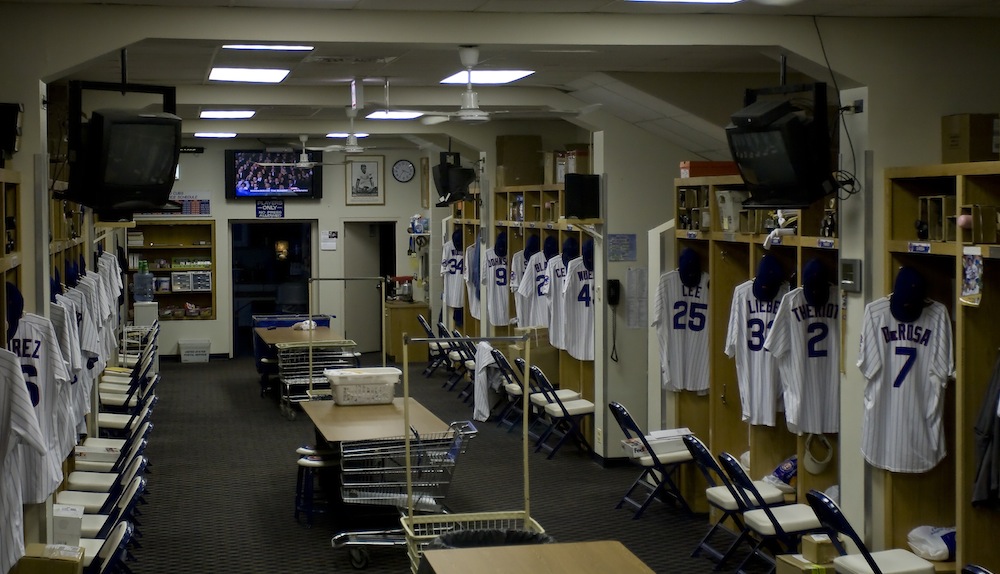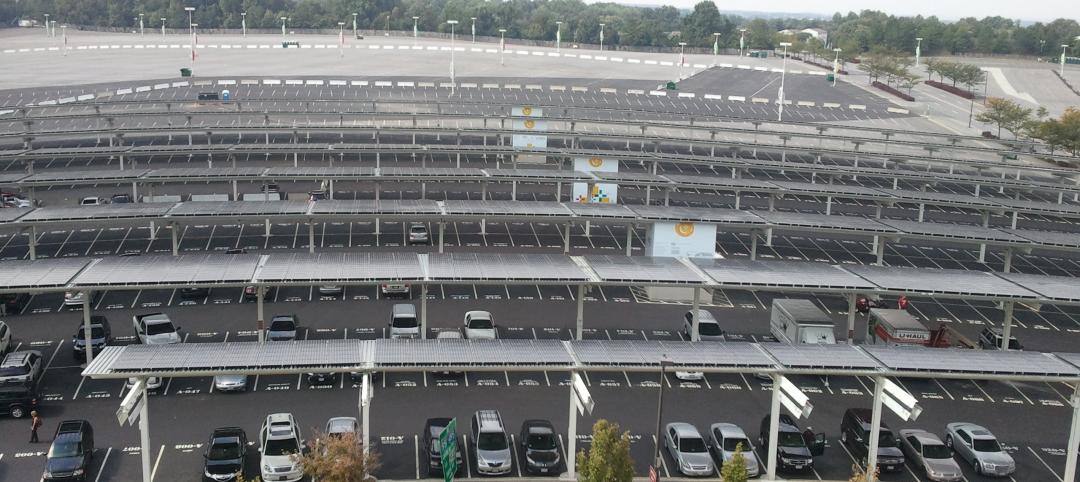For the Chicago Cubs, next year is here, at least in the literal sense. They play the Cincinnati Reds on Monday for their home opener, the first game at Wrigley Field in a promising 2016 season.
The game also marks the progression of the 1060 Project. Wrigley is in the process of modernization, and the latest update is that the Cubs’ new clubhouse is ready and the legendary marquee sign has been installed out front.
Wrigley’s old clubhouse, one of the worst in the majors, was 11,000 sf, a size that was acceptable generations ago but woefully small compared to the high tech, posh living rooms around the league. According to the Chicago Tribune, the new clubhouse is 30,000 sf. The space accommodates a larger locker room, a strength and conditioning center, training rooms, offices, and a lounge. The circular locker room has wood-paneled stalls centered around a central meeting area.
Home sweet(er) home! #LetsGohttps://t.co/A4qZxRGcZN
— Chicago Cubs (@Cubs) April 11, 2016
To find the space, the clubhouse was moved from the area underneath the seats behind the dugout to under an old parking lot on the west side of the ballpark. The old locker room will be turned into a batting cage. An open-air plaza will be built above the clubhouse.
Additionally, the signature red Wrigley Field marquee has been re-installed outside of the main entrance. EarthCam produced a time-lapsed video of crews putting it back together.
The Cubs are nowhere near done with the Wrigley overhaul. New clubs, decks, and outdoor concourses are being constructed, and a new umpire dressing room, visitors’ clubhouse, and press box are all in the works.
An outside development, including a six-story office building, 172-room hotel, open air plaza, and a bunch of commercial development spaces (restaurants, retail shops, an ice rink) will be built over the next few years.
The renovations started last year, when the Cubs revamped their outfield bleachers and erected two massive video boards.
Related Stories
| Sep 30, 2011
Design your own floor program
Program allows users to choose from a variety of flooring and line accent colors to create unique floor designs to complement any athletic facility.
| Sep 16, 2011
Largest solar installation completed at Redskins' football stadium
On game days, solar power can provide up to 20% of FedExField’s power.
| Sep 12, 2011
First phase of plan to revitalize Florida's Hialeah Park announced
This is the first project of a master plan developed to revive the historic racetrack.
| May 25, 2011
Olympic site spurs green building movement in UK
London's environmentally friendly 2012 Olympic venues are fuelling a green building movement in Britain.
| Apr 11, 2011
Wind turbines to generate power for new UNT football stadium
The University of North Texas has received a $2 million grant from the State Energy Conservation Office to install three wind turbines that will feed the electrical grid and provide power to UNT’s new football stadium.
| Apr 5, 2011
U.S. sports industry leads charge in meeting environmental challenges
The U.S. sports industry generates $414 billion annually. The amount of energy being consumed is not often thought of by fans when heading to the stadium or ballpark, but these stadiums, parks, and arenas use massive quantities of energy. Now sports leagues in North America are making a play to curb the waste and score environmental gains.
| Mar 25, 2011
Qatar World Cup may feature carbon-fiber ‘clouds’
Engineers at Qatar University’s Department of Mechanical and Industrial Engineering are busy developing what they believe could act as artificial “clouds,” man-made saucer-type structures suspended over a given soccer stadium, working to shield tens of thousands of spectators from suffocating summer temperatures that regularly top 115 degrees Fahrenheit.
| Mar 11, 2011
University of Oregon scores with new $227 million basketball arena
The University of Oregon’s Matthew Knight Arena opened January 13 with a men’s basketball game against USC where the Ducks beat the Trojans, 68-62. The $227 million arena, which replaces the school’s 84-year-old McArthur Court, has a seating bowl pitched at 36 degrees to replicate the close-to-the-action feel of the smaller arena it replaced, although this new one accommodates 12,364 fans.














